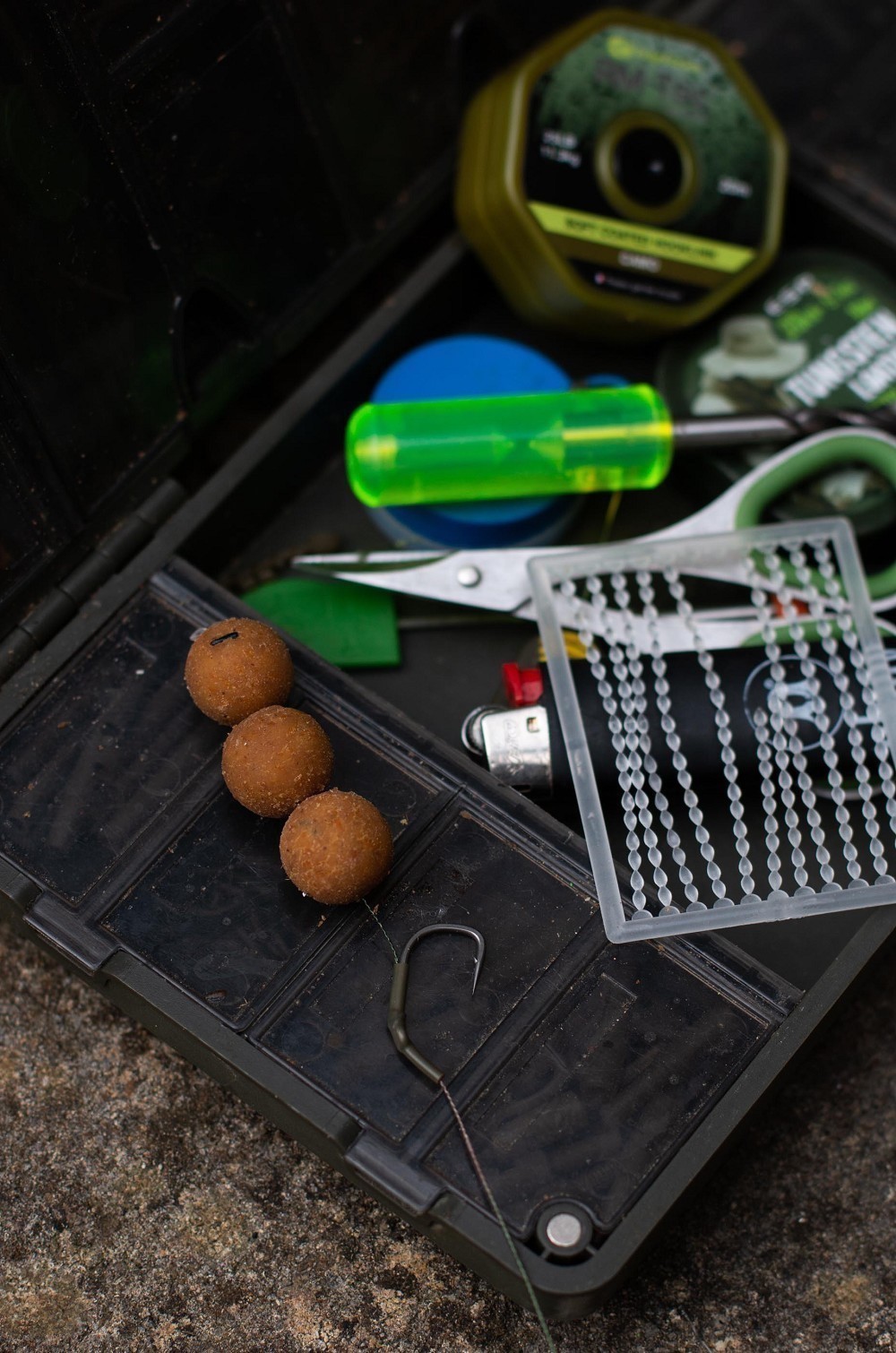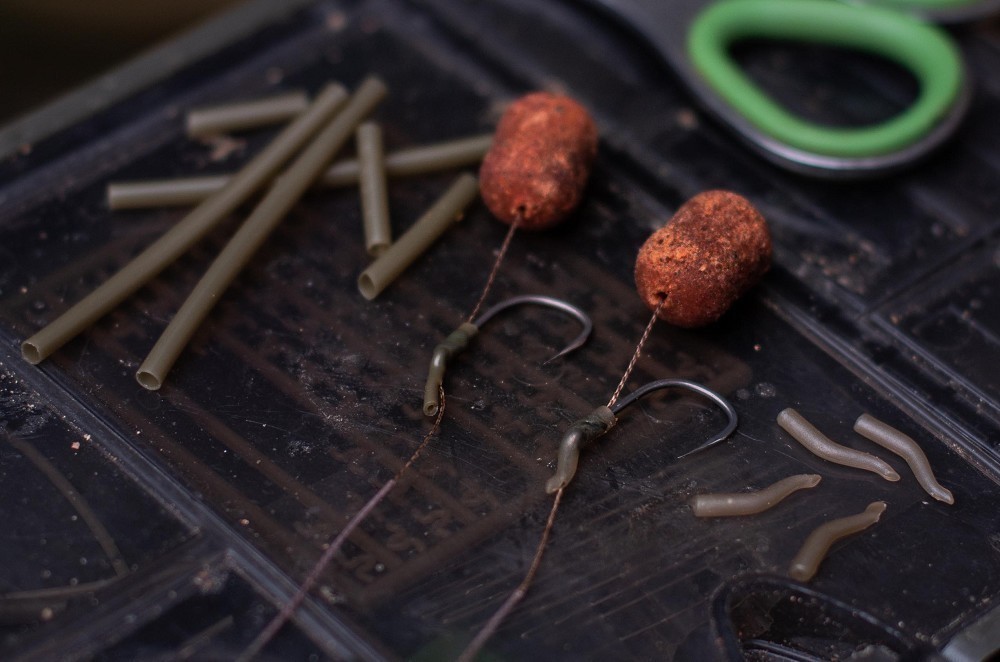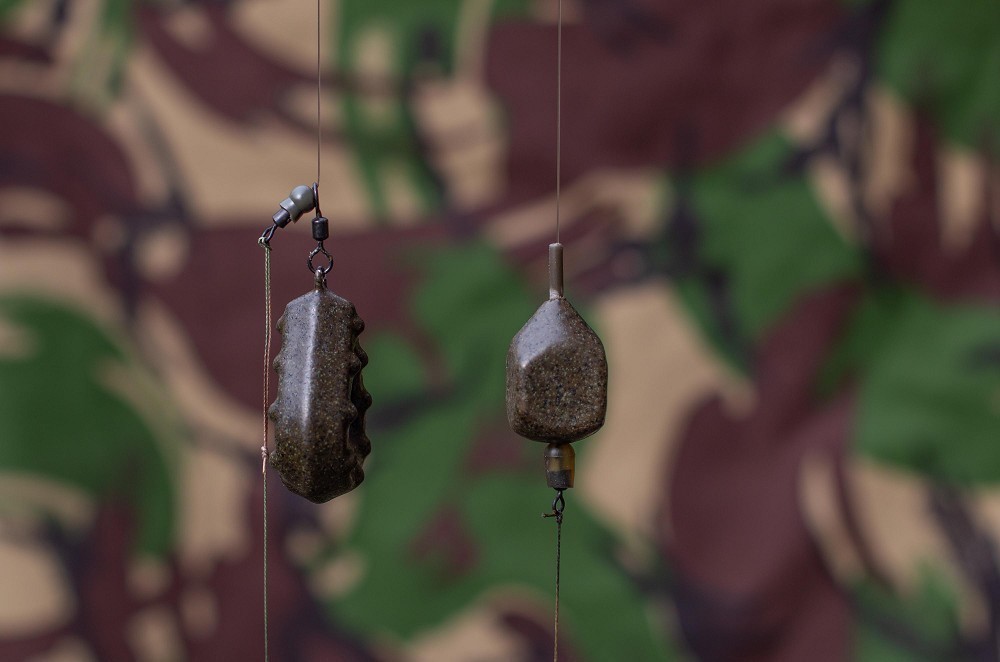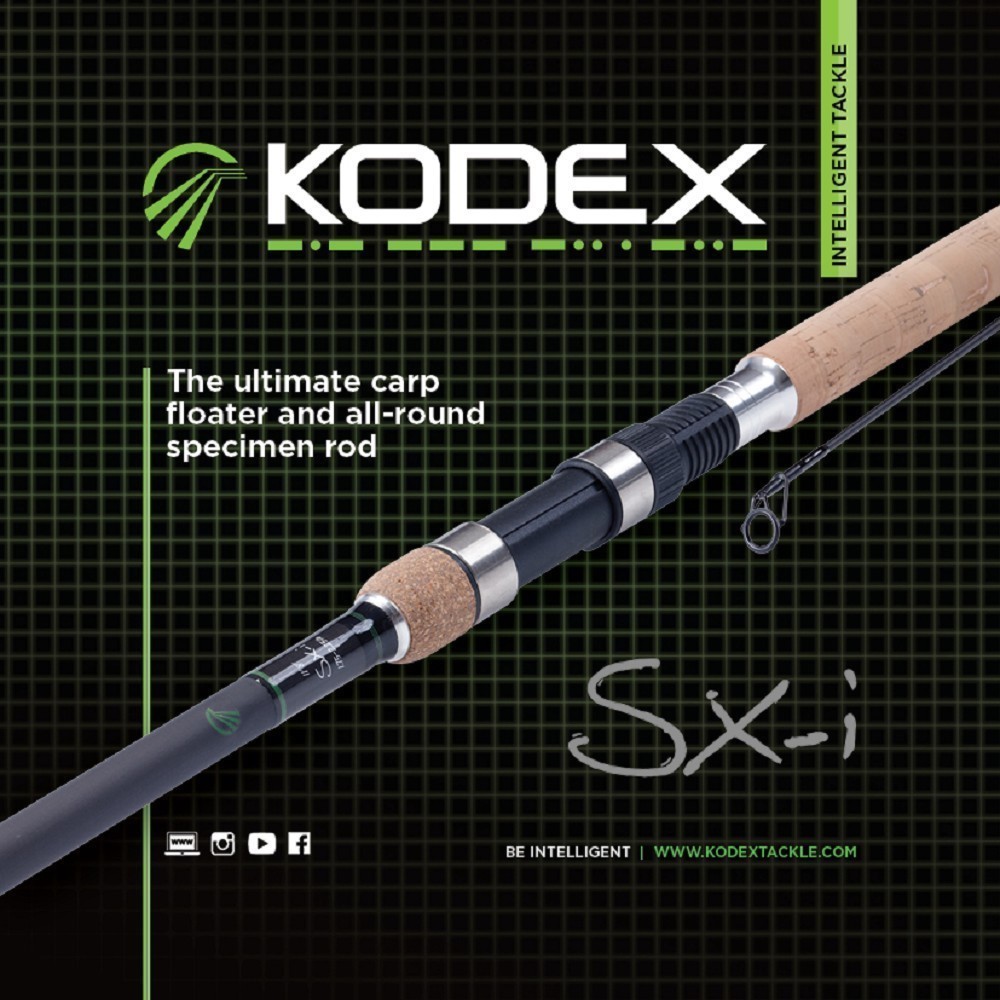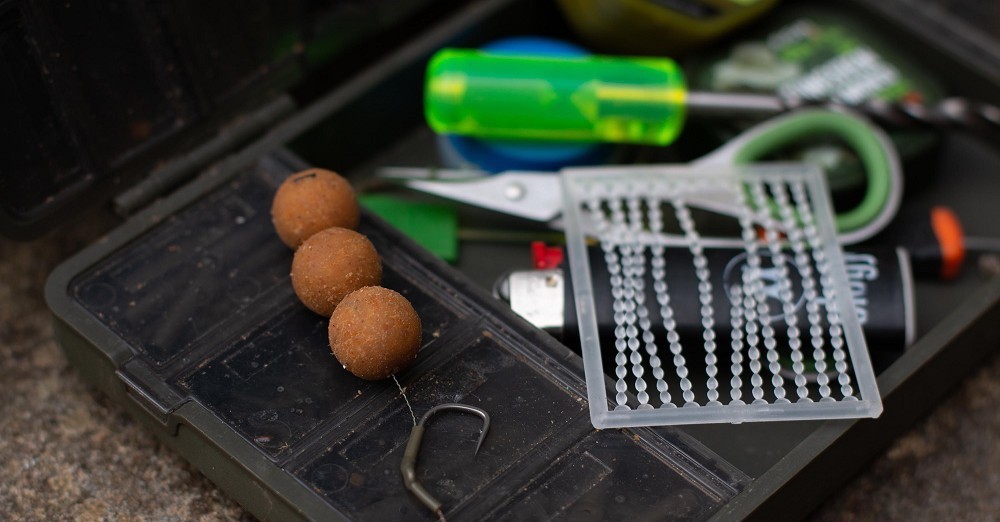
9 forgotten methods of carp fishing
We reveal all those old methods that worked in the past but have now been forgotten because something more “fashionable” has come along
What is it... Forgotten Baits
Nowadays it’s all boilies, pellets and fancy groundbaits, but whatever happened to luncheon meat, cockles, chick peas and that truly epic carp-catching tactic of scalding trout pellets and then wrapping them around a Method feeder?
What is it... Greedy Pig Rigs
Greedy Pig Rigs were the in-vogue rig set-up between the mid-80’s and mid-90’s and it was common place to use two or three 15mm boilies on the Hair. Not only did they create a real mouthful for the carp which (a) made it harder for them to eject, (b) helped select the large carp and (c) it made the hook end of the braided hooklinks that were used in these era less likely to tangle because of the heavier weight of the hookbaits.
Because of the shape and size of a double, sometimes triple hookbait, they almost wedged themselves inside the carp’s mouths making it far harder to eject and creating better hook holds.
Nowadays though, if anyone does use a double bait, it’s always a snowman: a bottom bait and a pop-up fished together. It seems that no one likes using two heavy bottom baits hard on the deck – everyone appears to be obsessed with lighting their hookbaits, so why not switch back to how the old school used to fish?
What is it... Stringers/Boilie Bags
It seems the humble stringer has been forgotten and left behind since the interception of PVA mesh. Once again, it was a method of the 80’s and 90’s, but when Korda released the first funnel web system in 1999 its sales have dropped off to almost nothing.
Nowadays everyone’s opting to use either small PVA bags of pellets or crushed boilies or Stick bags. Two or three boilies on a piece of PVA string with a few gaps between them so the string can dissolve used to be deadly method.
You can of course bring the stringer up to date, simple by the way you attach it: thread three boilies onto a length of PVA string or tape, tie the two ends together so you create a triangle and then thread it down your hooklink. By doing it this way, you can mask the hook point, stop the Hair tangling and help avoid tangles full stop; plus you’re just left with a cluster of boilies around the hookbait. You can even replace one of the boilies for a brightly coloured pop-up, so when the string/tape dissolves, the pop-up will rise to the surface and give you a marker to bait up too.
The other approach is to use a boilie funnel web. Place three boilies (ideally 16mm and over) into the tube. Position the three baits into an uneven shape and pull the knot down onto the top boilie and trim. Now this is the important part: force the middle boilie into the two end ones so it’s under tension. Once that PVA melts the three baits will ping apart, leaving you with a nice little spread of baits around your hookbait. A little edge is to pass a gate-latch baiting needle through one of the end boilies and pull your Hair back through before securing it with a bait stop. To ensure it doesn’t tangle, attach the hook through the top of the PVA.
What is it... Bread Stick Bags
“Although I haven’t used the method for sometime now, when I did use it, I found the best mix was to blend up three-quarters of a loft quite fine and the last quarter I left quite chunky, as this helped to push the Stick bag apart and filled the water column with different sized bread particles,” explains Nigel Sharp. “I also tended to use a small amount of mini pellets for added attraction and occasionally I dried off some sweetcorn. If I remember rightly, Kingsmill is meant to have one the highest yeast contents, which is incredibly attractive to carp, so I used that one and also found it best not to add too much to the mix – just keep it simple – after all, carp love bread, so why dilute it’s attractive properties?”
Hookbait-wise, you’ve got a number of options, but a couple of grains of fake corn or a critically-balanced boilie will work perfectly. However, whatever you use, make sure it’s balanced, because bread is obviously neutral buoyant, so it moves around easily and the hookbait needs to mimic that.
What is it... Braided Hooklinks
Thanks to the invention of fluorocarbon, stiff monos and coated hooklink materials, braid seems to have dropped off everyone’s radar. It’s always been the tangle-aspect that’s put anglers off using, but there are a number of ways to overcome this problem.
To ensure the braided hooklink would sink and hold to the lakebed, heat up a lump of putty on the kettle until it goes soft and sticky and then rubbed it along the braid. This stops any air bubbles getting trapped in the braid fibres but it also has the added bonus of making them slightly stiffer which will help eliminate the tangle problem slightly. You can also add a stringer or a stringer parachute bag, as that adds weight to the end of the hooklink, which in turn helps prevent tangles according.
Previous CARPology cover star, Ian Russell currently uses braid and does so for one simple reason: “No one else is using it!” he says with wry smile. “Carp learn by association and with everyone using stiffish coated hooklinks and semi-fixed 3oz lead set-ups, they quickly learn how to deal with them.”
What is it... Bowstring tight lines
Flick through any edition of CARPology and you’ll find numerous references to “make sure you fish ultra slack lines”. However, back in the 80’s, fishing bowstring tight lines was a serious edge. It was a method that was perfected on the famous Savay Lake in the Colne Valley, where the syndicate members would fish really heavy leads and then tighten up to them to the point where the lead was almost going to move. In essence it was like a bungee. The moment the fish picked up the bait and moved the lead, it would ping back towards to the rod, pulling the hook firmly home. With everyone fishing super slack lines this could be a serious edge.
What is it... Line-Aligner
Originally created and designed to help flip the rig over in the fish’s mouth, but who does it now? Years ago anglers used to use thick-walled 0.75mm silicone to create this effect, but since the late 90’s, when shrink tubing came onto the market, most anglers now tend to just curve the shrink tubing, creating an aggressive angle, but the hooklink material isn’t actually exiting through the side like we used to do – it’s coming out of the top. Doing it this way is basically easier, more convenient and quicker to tie construct, but the original method of exiting the hooklink through the side definitely flips the rig over better.
If you’re using shrink tubing on your rigs right now, make the effort to do it line-aligner style – it’s way more effective and as no one’s doing it, it’s instantly an edge.
What is it... Running Leads
If a survey were taken of the nation’s carp anglers asking which lead set up they used, we would suspect that the vast majority of anglers would say they use a semi-fixed lead. That maybe in the form of an in-line set-up, a helicopter rig or one of the safety clip systems. In principle, they all work on the same ‘bolt rig’ effect. But just like Ian just stated with the hooklink material, carp learn by association, so switching to a running lead set-up not only offers all of these advantages: perfect for fishing a slack line, fishing against an island and offering the best in indication, but the chances are, the carp in your lake won’t have felt this type of lead arrangement for a long time.
What is it... Proper Hairs
Hands up who ties their Hair from the hooklink material they’re using? We’re guessing 99% of you will be. However, the original Hair was tied from very fine mono which allowed your chosen hookbait to move naturally. By tying the Hair from an extension of the hooklink material, this movement is dynamically reduced because although it’s soft and supple, it’s still not as fine and fragile as light mono. To give yourself an edge over everyone else who’s using a Hair rig, tie your Hair from 3lb mono.





